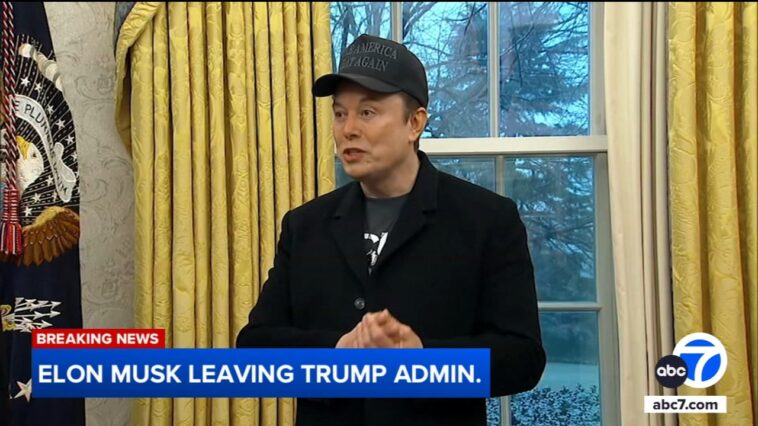Elon Musk concluded his tenure at the Department of Government Efficiency in the month of May. Upon his departure from the Oval office, the complexity of severing ties with Musk’s businesses was an issue that couldn’t be overlooked by the U.S. government. Just after President Trump hinted at the possibility of severing ties with Musk’s enterprises early in June, the administration started examining SpaceX’s federal contracts. This investigation was implemented to pinpoint possible excesses in the billions of dollars worth of agreements between SpaceX and the government.
However, ending a majority of those contracts proved to be nonviable for the officials due to the criticality of the contracts to both the Department of Defense and NASA. The preliminary evaluation made clear the supremacy of the company as the leading rocket launcher globally and a significant player in the satellite-internet provision sector. A senior White House official stated that the investigation of government contracts extended to various other businesses that also had profitable contracts with the government.
Musk has had a history of being one of president Trump’s trusted counsellors, overseeing the cost-curbing initiative known as the Department of Government Efficiency. However, the bond between Musk and Trump strained when Musk openly criticised Trump’s noteworthy tax and expenditure bill. As Musk’s vocal criticisms on social media headed in a more personal direction, on the 5th of June, Trump suggested that the simplest method to conserve federal expenses was to put an end to the government contracts with Musk’s companies.
Shortly after this, in the subsequent days, a high-ranking official from the General Services Administration asked the Department of Defense to compile all current SpaceX contracts and other transaction agreements in a spreadsheet. The official intended to forward this data to the White House. She made comparable inquiries for SpaceX’s contract details from NASA and several other federal bodies.
The constructed ‘scorecards’, or spreadsheets, contained crucial information like the monetary value of the SpaceX contracts and an evaluation of whether any competitor could perform the same tasks more efficiently. After studying the scorecards, the officials from the White House and other agencies, including Pentagon representatives, concluded that a majority of these contracts are indispensable for the functioning of the Defense Department and NASA.
However, they did indicate that certain SpaceX contracts may undergo continued inspection. The struggles faced by the Trump administration in their pursuit to lessen the government’s dependency on SpaceX, accentuated the significant reliance that these agencies have on the advanced technology provided by the company. Currently, the government has limited alternative solutions for many rocket launches and services related to low-Earth-orbit satellites, which keeps SpaceX, and Musk in particular, in a proprietary position in the space sector.
This dependency of the government on SpaceX’s innovative technology has been recognized for several years now, making the recent review by the Trump administration yet another indicator that decision-makers are grappling with the situation. The leading position that SpaceX presently occupies has also caused dissatisfaction amongst its industry competitors.
The government has increasingly collaborated with SpaceX due to the company’s tech superiority and competitive pricing. There has also been an effort by the government to motivate other space enterprises to elevate their services and introduce contracts designed to foster competition. However, these rival companies still face significant challenges as they aim to develop their space vehicles and satellite systems, and strive to operationalize them.
Many companies dealing with space technology have experienced delays and technical difficulties while working on products that could compete with SpaceX. It’s commonplace to experience setbacks in this industry as engineers work on refining complex hardware designed specifically for space.
SpaceX executives have professed their belief in the benefits of competition, further evidenced by SpaceX’s frequent launches of their rivals’ satellites into space. Despite the disagreement between President Trump and Musk earlier this year, the company has sustained its winning streak in securing more government contracts and progressing with major missions.
In April of the same year, SpaceX managed to secure the largest portion of funding and launches under a Pentagon contract that had gained a lot of attention. It secured 28 national-security flight contracts in a new agreement valued at $5.9 billion. Moreover, in May, SpaceX was able to successfully launch an upgraded GPS satellite for the Space Force.
NASA is also currently planning on commissioning SpaceX to dispatch a new crew to the International Space Station by the end of this month. As such, SpaceX’s Falcon rockets, which include reusable boosters, have become significant assets for government space missions.
SpaceX’s Crew Dragon spacecraft holds the unique distinction of being the only U.S. vehicle with certification to transport individuals to and from the International Space Station. Musk’s reaction to President Trump’s proposals last month caused a stir within NASA, which has long intended to have a second option for astronaut missions to the space station.
Beyond rocket launches and missions, SpaceX also has a growing division providing high-speed internet to various government bodies via its Starlink satellite fleet. A division of SpaceX caters specifically to national security related satellite capabilities.

